Anika started with Figure A and performed two transformations, which resulted in the figures shown below.
Transformation 1 resulted in Figure B from Figure A. Transformation 2 resulted in Figure C from Figure B.
Describe each transformation.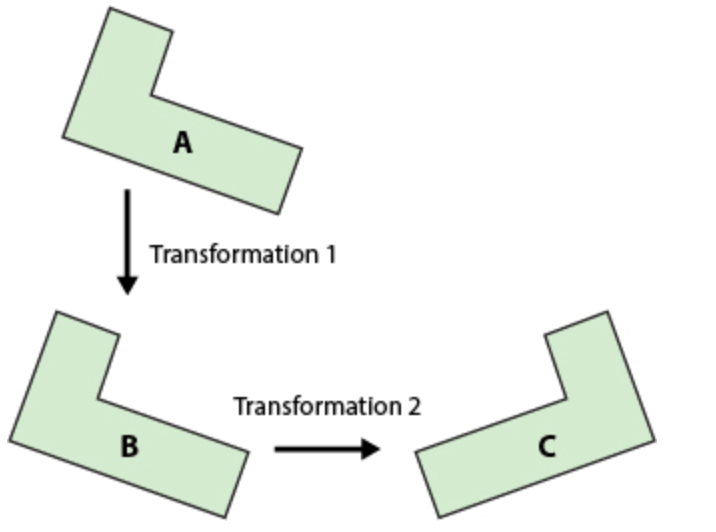
Transformation 1: Translation
Transformation 2: Reflection
The coordinate plane below shows the location of △RST.
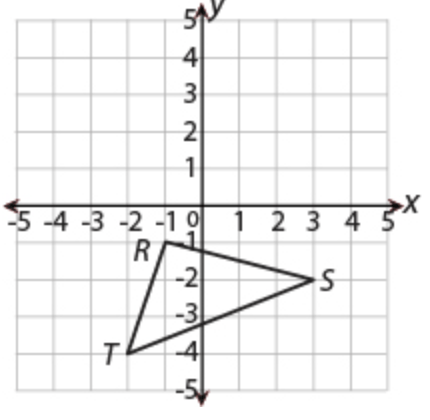
Triangle RST was rotated 90 degrees clockwise about the origin to form △R'S'T'. Which coordinate plane shows the location of △R'S'T'?
a. 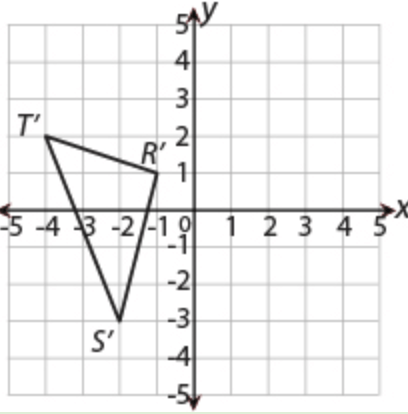
b. 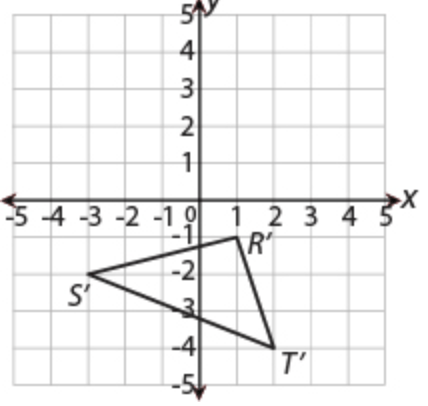
c. 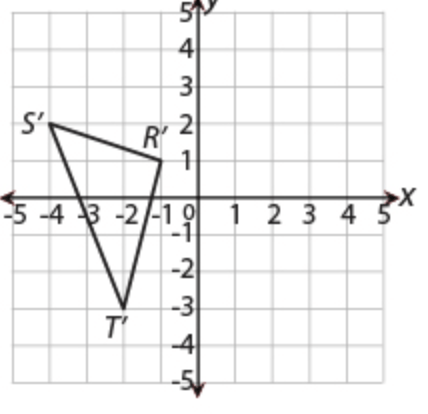
A. 
What are the measurements of angle x and y?
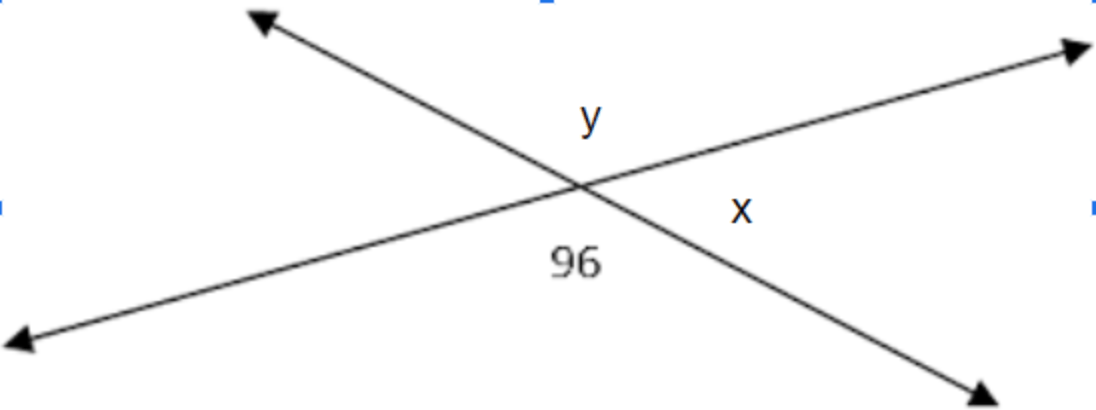
x = 84°
y = 96°
In the figure below, △ABC is similar to △DEF.
What is the measure of ∠F?
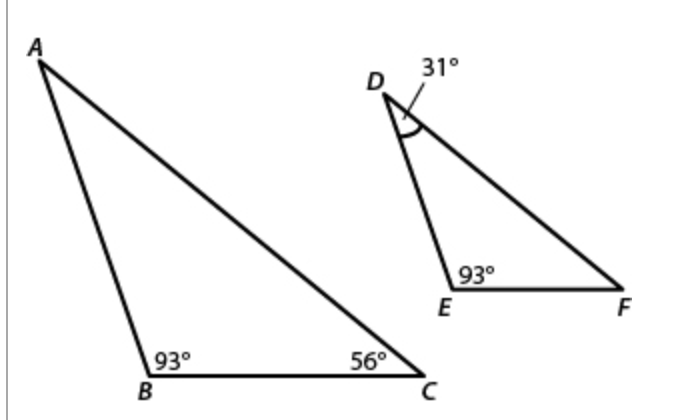
∠F = 56°
A line is graphed below.
What is the slope of the line?
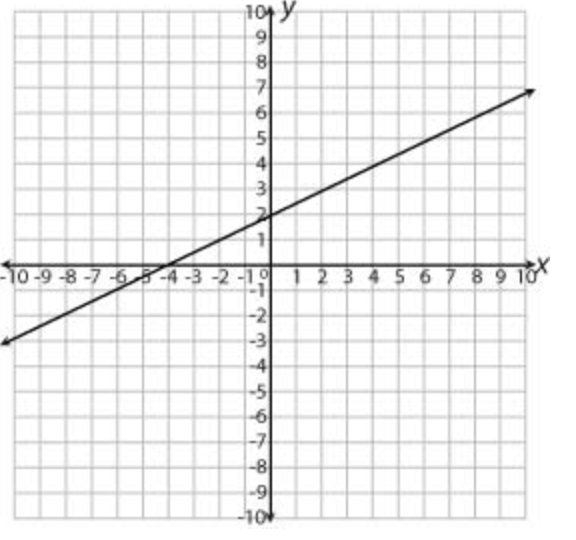
Slope = 1/2
A line segment is plotted on a coordinate plane with the end points at (–9,–5) and (–4,–5).
The line segment has been translated 12 units to the right and 9 units up. Graph the end points of the line segment after this translation.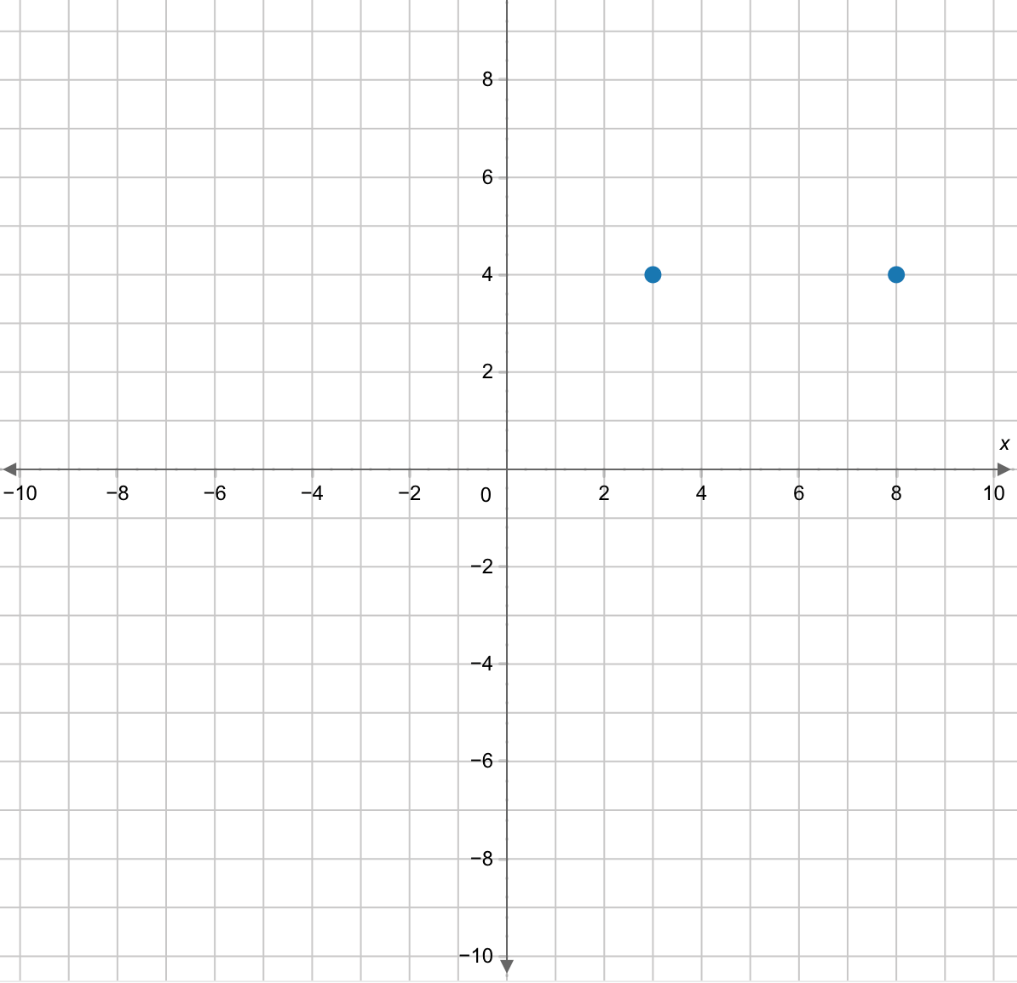
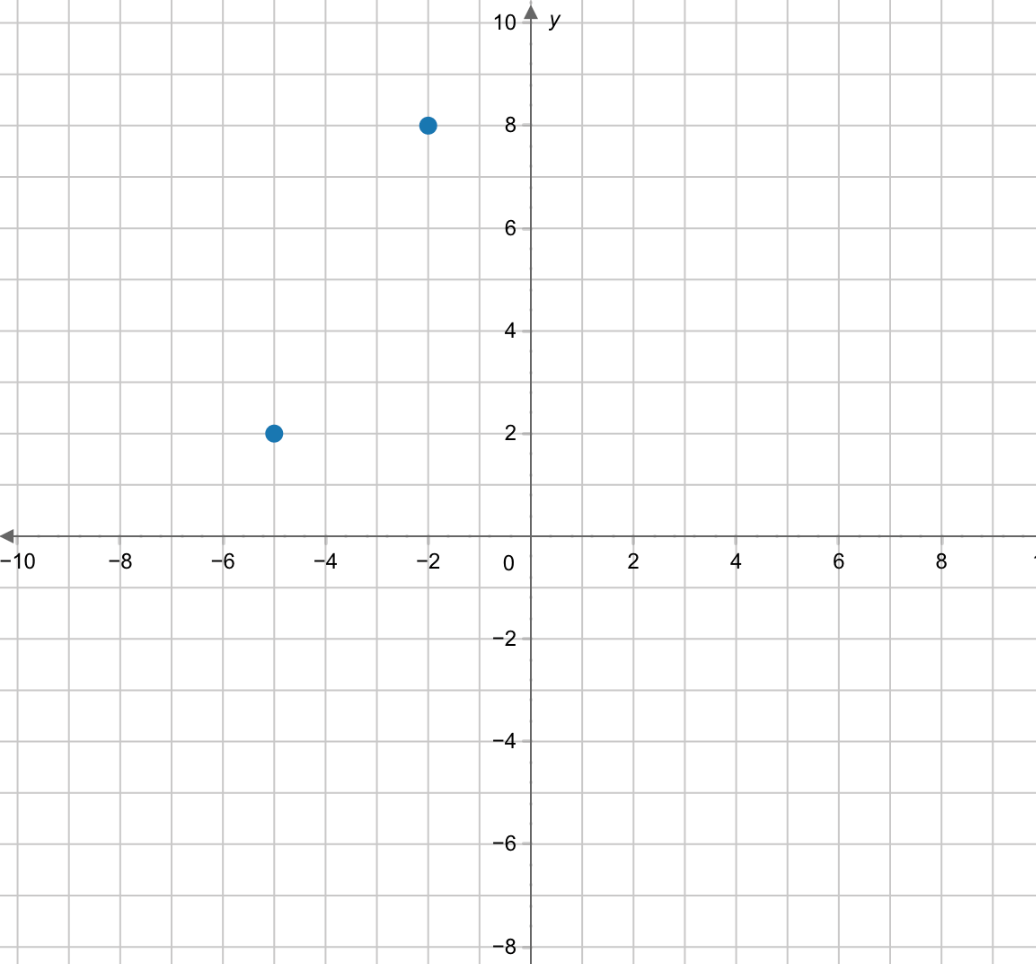
An angle graphed in the coordinate plane has a measure of 120°. Which of the following statements are true? Select TWO that apply.
A
After a reflection over the x-axis, the angle will still measure 120°.
B
After a translation 9 units down, the angle will no longer measure 120°.
C
After a 270°-clockwise rotation about the origin, the angle will no longer measure 120°.
D
After a 90°-counterclockwise rotation about the origin, the angle will still measure 120°.
E
After a dilation through the origin by a scale factor of 14, the angle will no longer measure 120°.
A.
Angle measures remain the same after a reflection.
D.
Angle measures remain the same after a rotation.
Triangle ABC is shown. The measure of the interior angle at point A is 29° and the exterior angle at point C is 82°.
What is the measure of angle x?
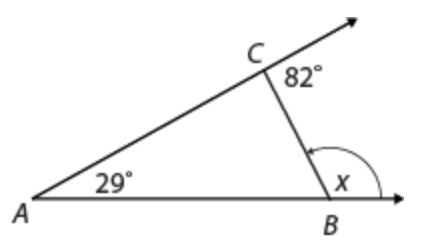
x = 127°
In the figure below, △MNO is similar to △PQR.
What is the measure of ∠N?
Complete the equation to show how to find the measure of ∠N. Type the response in the boxes below.
180°
55.5°
40.5°
What is the formula for finding the slope of a line?
Rise divided by Run
Rise/Run
y/x
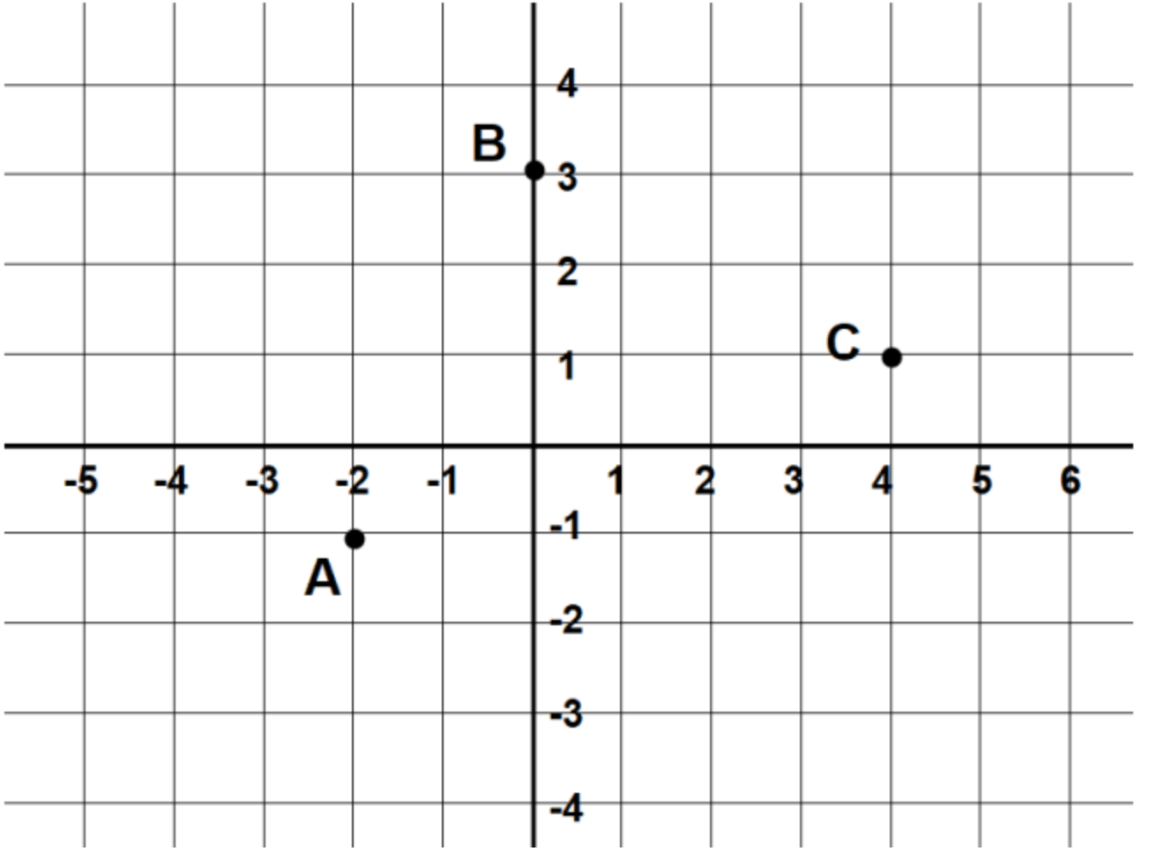
What are the coordinates of A, B, and C after a translation 1 unit to the left and 3 units down?
A' (-3, -4) B' (-1, 0) C' (3, -2)
In the figure below △A′B′C′ is the image of △ABC after two transformations are applied.
Describe the transformations that map △ABC to △A′B′C′.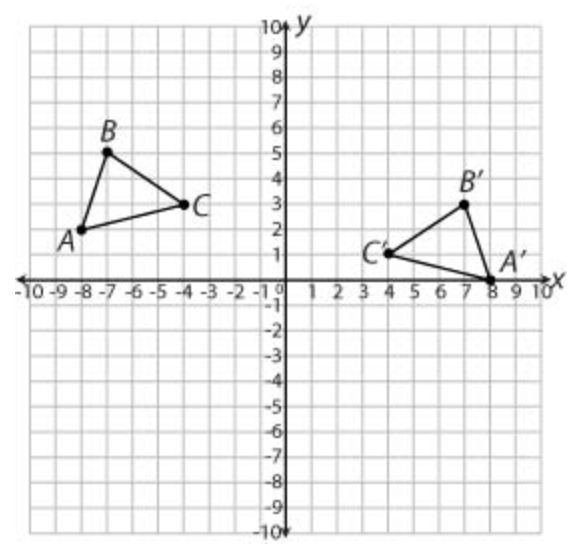
△A′B′C′ is the result of applying a translation two units down followed by a reflection across the y-axis to △ABC.
Describe a single transformation that takes triangle WIG onto triangle FLD. Be sure to include all key pieces of information necessary for the given transformation. How does this single transformation demonstrate that the triangles are the same, or congruent? (3 points)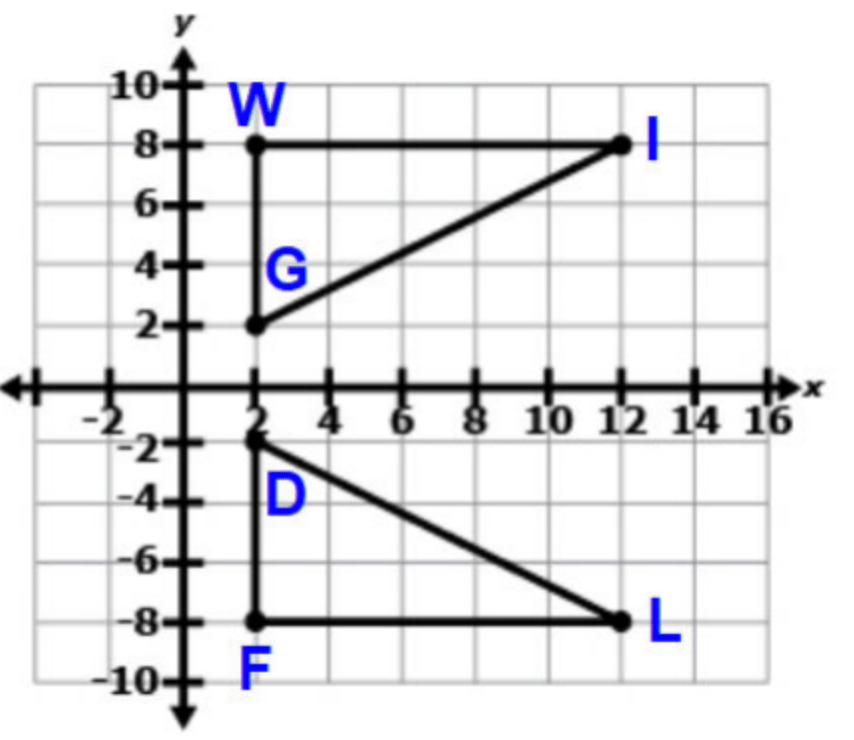
Reflection over the x-axis, and accurately described that the figures were congruent because all points of the triangle correspond to point in the other figure.
Figure ABCDE is rotated 180° and then translated down to form a figure with the listed angles.
Find all of the Angles in Figures ABCDE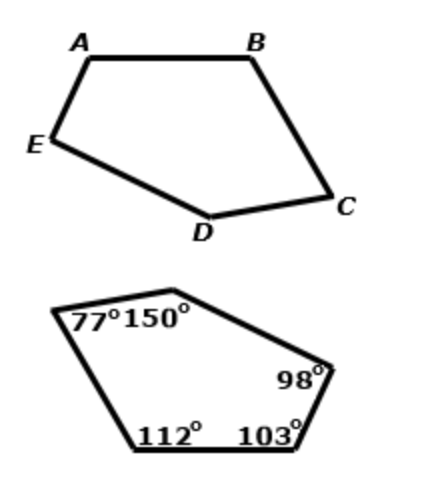
<B = 112°
<C = 77°
<D = 150°
<E = 98°
A line is shown on the coordinate plane.
What is the equation of the line?
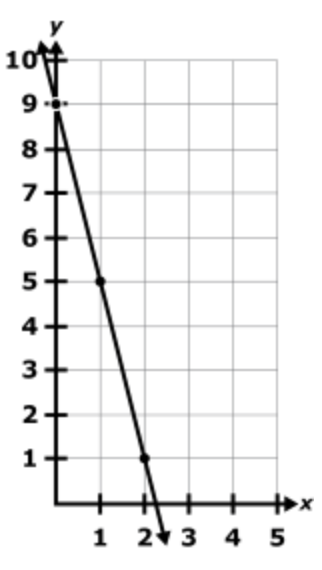
y = -4x + 9
On the graph, △DEF was transformed to create △DGH.
Which transformations show that △DEF is similar to △DGH?
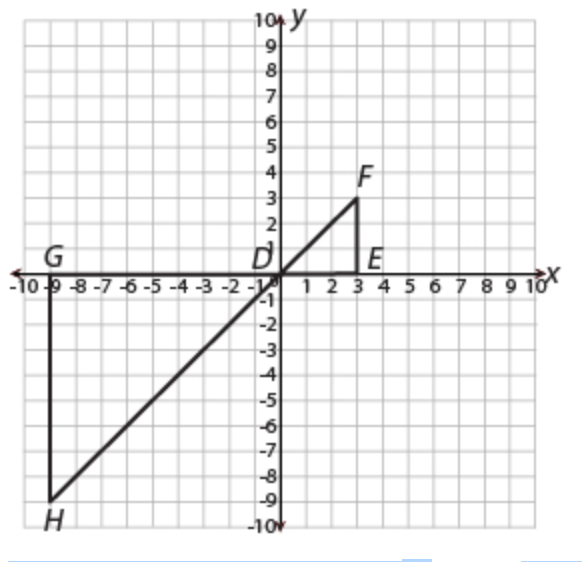
A dilation by a scale factor of 3 and then a 180° rotation about the origin
What do you need to know to perform a:
Translation: ____________________
Reflection: ____________________
Rotation: ____________________
Dilation: ____________________
Translation: Distance and direction
Reflection: Line of Reflection
Rotation: Degree and Direction
Dilation: Scale Factor and Center of Dilation
In the figure shown, lines k and l are parallel.
If the measure of < 7 = 100° , what is the measure of < 4?
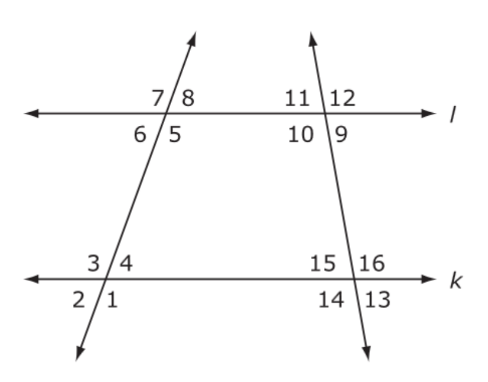
<4 is 80°
These two triangles are similar triangles. If the smaller triangle is dilated to become the bigger triangle, what would the length of side x be?
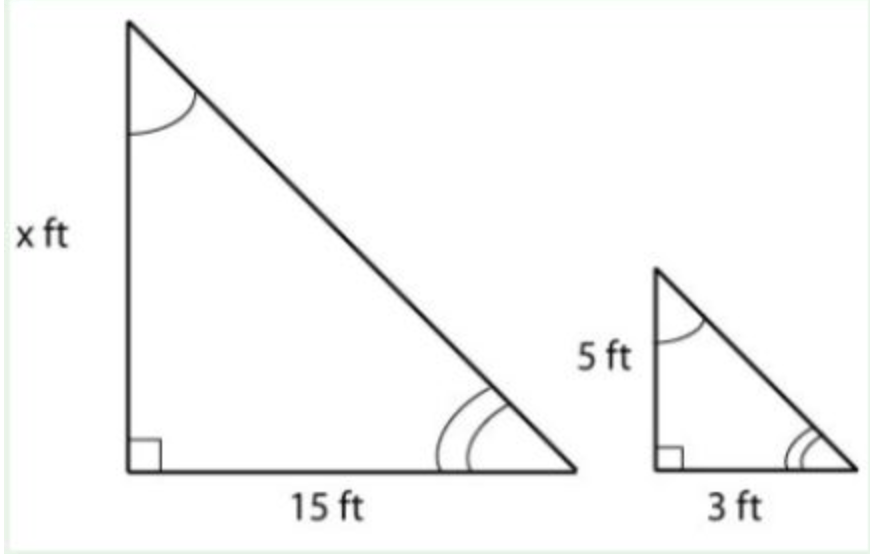
x = 25
Line t and ∆ACE and ∆BFD are shown on the coordinate plane.
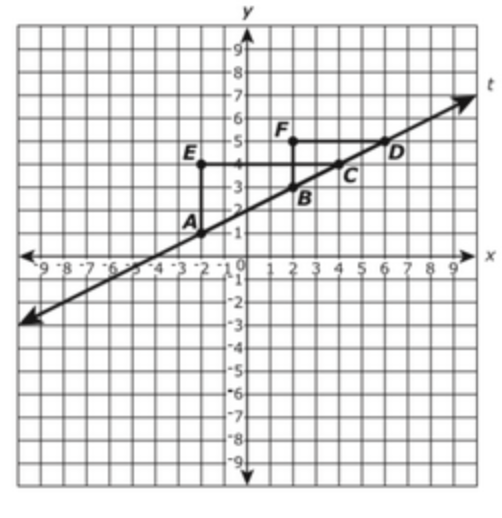
A. The slope of line AC is equal to the slope of line BC
B. The slope of line AC is equal to the slope of line BD
C. The slope of line AC is equal to the slope of line t
D. The slope of line t is equal to EC/AE
E. The slope of line t is equal to FB/FD
F. The slope of line t is equal to AE/FD
A. The slope of line AC is equal to the slope of line BC
B. The slope of line AC is equal to the slope of line BD
C. The slope of line AC is equal to the slope of line t
E. The slope of line t is equal to FB/FD
Which set of coordinates represents the reflection of the following image over the y–axis?
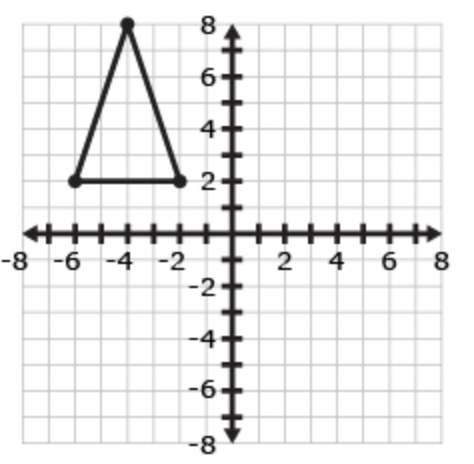
(6 , 2), (4 , 8), (2 , 2)
Figure 2 is a transformation of Figure 1, and vertex X is on line n.
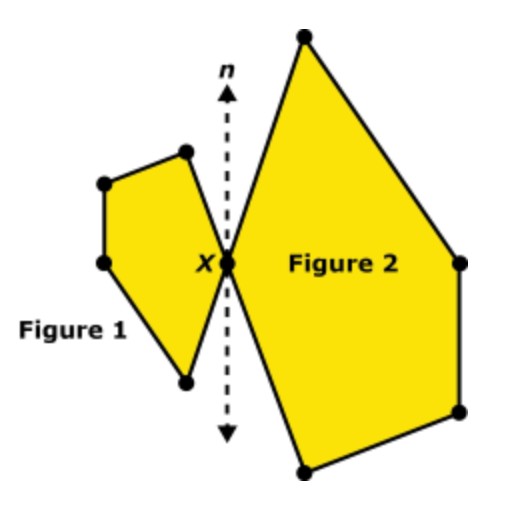 A. a rotation of 180° counterclockwise about vertex X followed by a dilation through vertex X by scale factor greater than 1
A. a rotation of 180° counterclockwise about vertex X followed by a dilation through vertex X by scale factor greater than 1
B. a rotation of 180° counterclockwise about vertex X followed by a dilation through vertex X by scale factor less than 1
C. a reflection over line n followed by a dilation through vertex X by scale factor greater than 1
D. a reflection over line n followed by a dilation through vertex X by scale factor less than 1
A. a rotation of 180° counterclockwise about vertex X followed by a dilation through vertex X by scale factor greater than 1
Tiana has a triangular piece of construction paper. She cuts the paper into three pieces.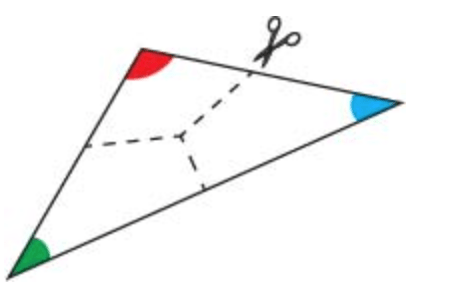
Then, she rearranges the three pieces as shown.
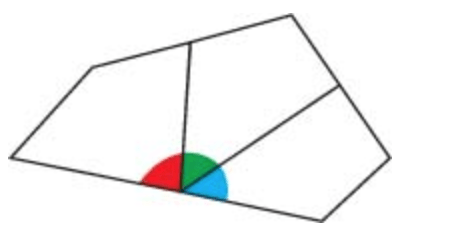
What do the pieces of Tiana's triangle show?
The sum of the interior angles of a triangle is equal to the measure of a straight angle.
Describe a sequence of transformations that shows that triangle A”B”C” is similar to A’B’C’. Include all necessary information to complete each transformation. Your response should include justification for similarity.
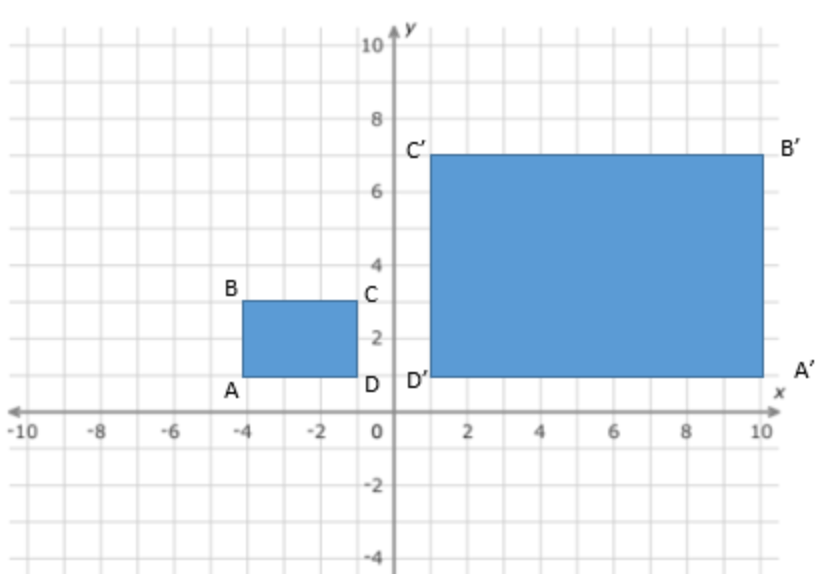
A reflection across the x- axis. A dilation of scale factor 3 from point (1, 1).
The two figures are similar because they are still the same shape, and after a series of transformations, including a dilation the sides are now proportional and the angles remain the same measures.
Grace drew two right triangles that have hypotenuses on the same line as shown in the coordinate plane below.
Part A: What is the slope of the hypotenuse of △ABC?
Part B: What is the slope of the hypotenuse of △AGH?
Part C: How do they compare?
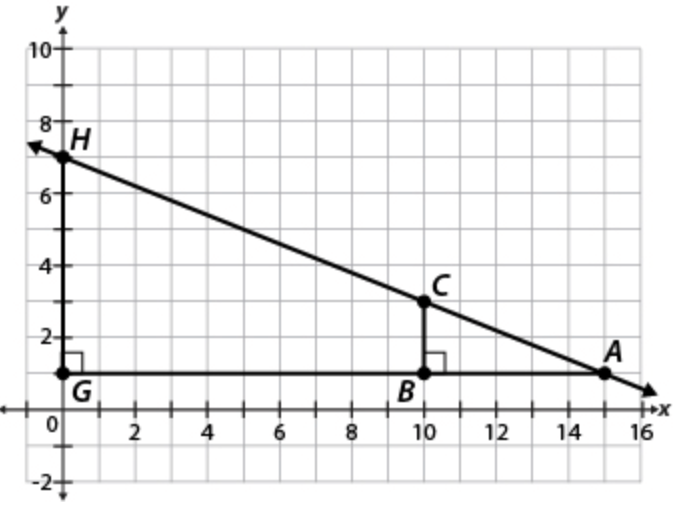
Part A: The slope of the hypotenuse of △ABC=−2/5
Part B: The slope of the hypotenuse of △AGH=−2/5
Part C: The slope of the hypotenuse of △ABC is the same as slope of the hypotenuse of △AGH.